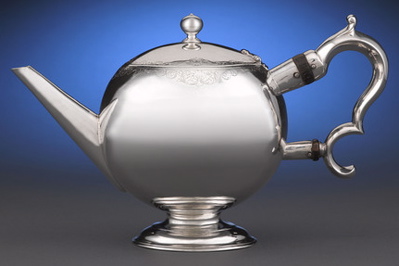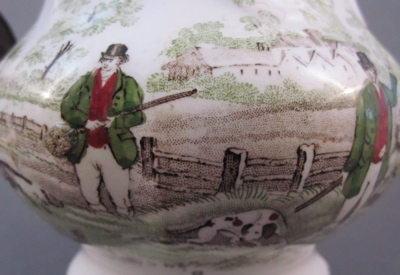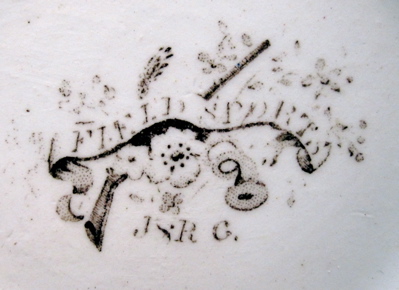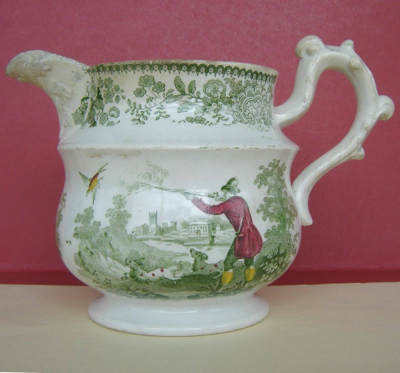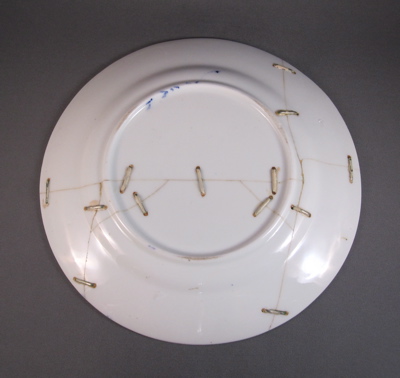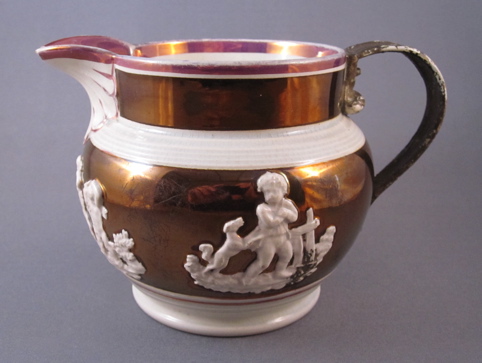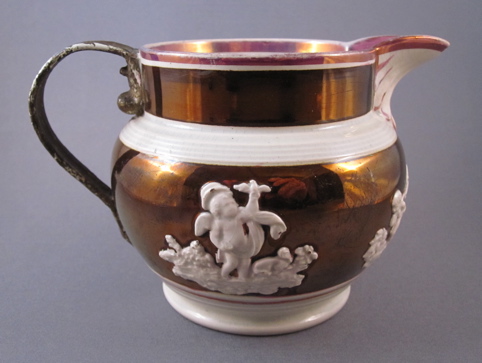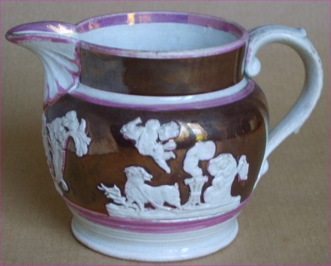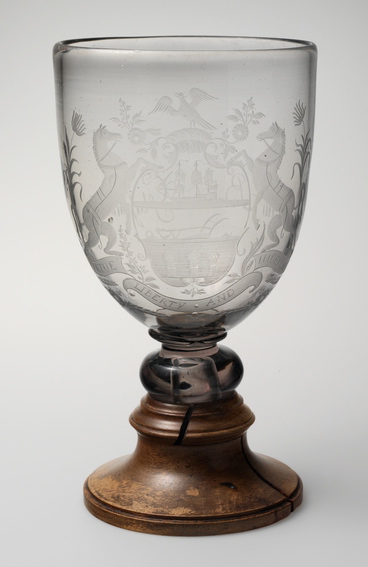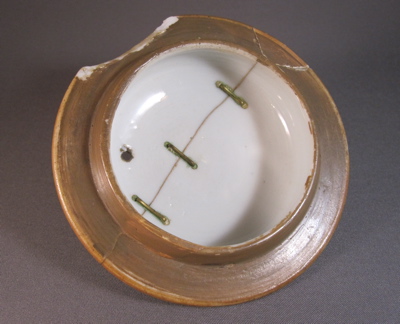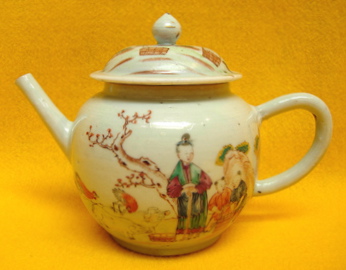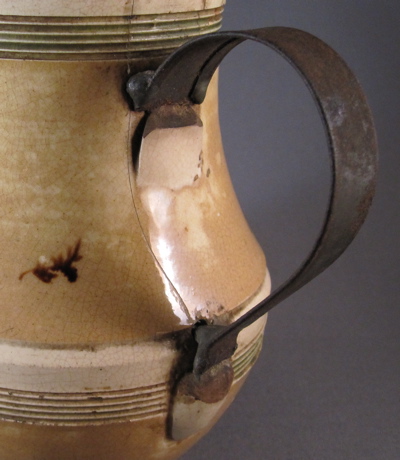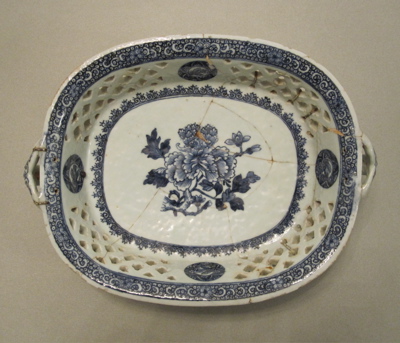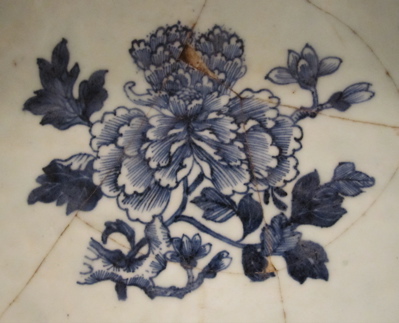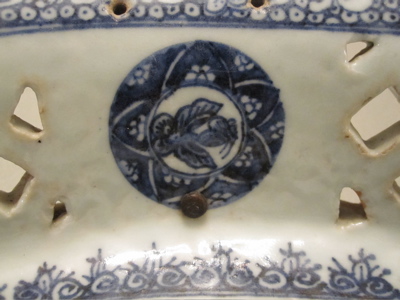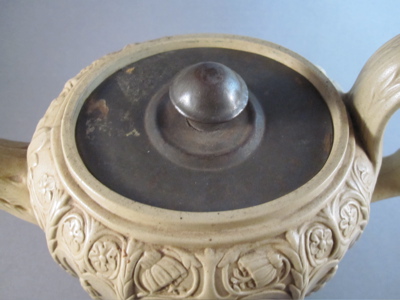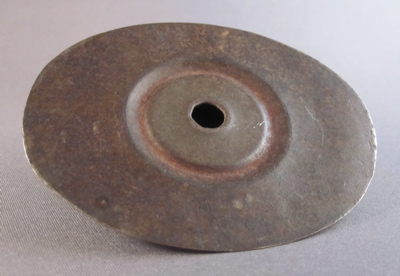A bullet (aka globular) form porcelain teapot made in China, started out with a simple cobalt blue underglaze decoration. Later in life, it was “clobbered” in the Imari style, as a more ornate and colorful type of porcelain was in favor at the time. It was over painted in washes of iron-red, pink, orange and blue enamel. Teapot stands 4-1/4″ high
The broken spout was replaced in the 19th century with a new one made of silver plate
A nicely scalloped silver collar was added in the 1800’s to mask the chipped rim
My porcelain teapot’s bullet form was based on European silver, as is evident in this 18th century silver teapot
photo courtesy of M.S. Rau Antiques



